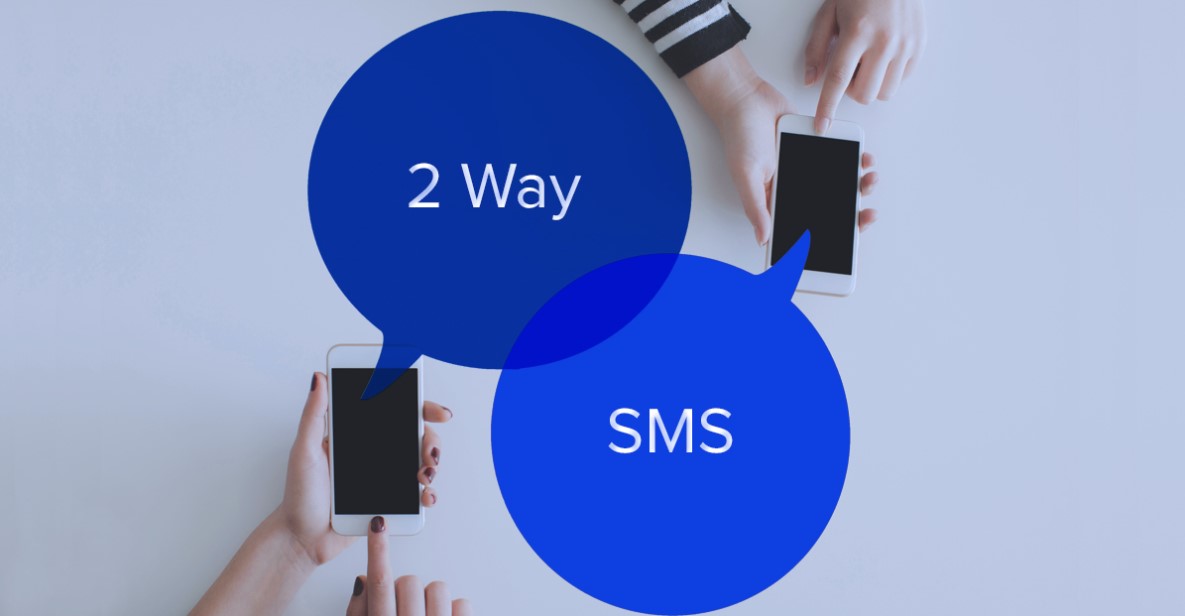Two way messaging refers to the ability for users to both send and receive messages in a communication system. This can include text messaging, email, instant messaging, and other forms of digital communication.

Two-way messaging allows for real-time, interactive communication between users, which can be useful for both personal and business contexts.
Some examples of two-way messaging systems include:
- SMS or text messaging on a mobile phone
- Instant messaging apps like WhatsApp, Facebook Messenger, and WeChat
- Email, which allows users to send and receive messages with attachments
- Chatbot systems, use natural language processing to understand and respond to user input in real time.
Two way messaging systems can be used in a variety of ways, such as customer service, marketing, and team collaboration. For example, a company might use a chatbot on their website to answer customer questions and provide support 24/7, or a team might use a messaging app to stay in touch and share information with one another.
Two way messaging also has a lot of features for secure messaging and encryption to protect the user data.
Features of Two Way Messaging
Two way messaging refers to the ability for users to both send and receive messages in a communication system. Here are some key features that are commonly found in two-way messaging systems:
- Real-time communication: Two-way messaging systems allow for real-time communication between users so that messages can be sent and received in a near-instantaneous fashion.
- Delivery and read receipts: Many two-way messaging systems include delivery and read receipts, so users can know when their message has been received and read by the other party.
- Push notifications: Two-way messaging systems often include push notifications, which alert users to new incoming messages, even when the app or service is not open on their device.
- Group messaging: Some two-way messaging systems include group messaging, allowing multiple users to participate in a single conversation.
- Media sharing: Many two-way messaging systems allow users to share media such as images, videos, and audio files, as well as other types of files, such as PDFs, Word documents, and more.
- Location-sharing: Some two-way messaging systems include location-sharing functionality, which allows users to share their location with other users in real-time.
- Encryption: Many two-way messaging systems use end-to-end encryption to protect the privacy and security of messages so that only the sender and the intended recipient can read the message.
- Archiving and searching: Two-way messaging systems often include features for archiving and searching for past conversations and messages, making it easy to retrieve information from previous interactions.
- Integrations: Two-way messaging systems may integrate with other platforms, for example by connecting to a CRM to access customer data, or with an AI-based chatbot to handle customer service requests.
- Multi-device support: Many two-way messaging systems support multiple devices, allowing users to access their messages and participate in conversations across devices, such as smartphones, tablets, and desktop computers.
Also read: Top Bulk SMS Provider
Benefits of Two way messaging
Two way messaging systems can offer a number of benefits to users, including:
- Real-time communication: Two-way messaging allows for real-time communication, which can be essential for personal and business contexts. This allows users to get quick responses to their queries, questions, and feedback.
- Increased Productivity: Two-way messaging can increase productivity by allowing team members to collaborate, share information, and stay in touch with one another more easily.
- Improved Customer Service: Two-way messaging can be used to provide customer service, allowing customers to get help and support in real time. This can help to reduce response times, increase satisfaction, and build stronger customer relationships.
- Increased Engagement: Two-way messaging can help to increase engagement between businesses and customers, by providing a convenient and accessible way for customers to get in touch with a business.
- Cost-effective: Two-way messaging systems can be less expensive than traditional communication methods such as phone or email.
- Personalization: Two-way messaging allows for personalized communication between users, allowing for targeted and meaningful interactions.
- Archiving and Searchability: Many two-way messaging systems allow for archiving and searching for past conversations and messages. This makes it easy to retrieve information from previous interactions, improving memory and accessibility.
- Multi-device Support: Many two way messaging systems support multiple devices, allowing users to access their messages and participate in conversations across devices.
- Increased Flexibility: Two-way messaging can increase flexibility by allowing users to communicate from any location, at any time, as long as they have an internet connection.
- Security: Many two-way messaging systems include end-to-end encryption to protect the privacy and security of messages, ensuring that conversations stay private and can’t be intercepted by a third party.
In conclusion, two way messaging has become an essential tool for personal and business communication, providing real-time communication, increased productivity, improved customer service, and cost-effectiveness. With features such as media sharing, encryption, archiving, and searchability, two-way messaging systems are increasingly being used to meet various communication needs, including team collaboration, customer support, and marketing.
As technology advances, two way messaging is likely to become more advanced, more secure, and more personalized, providing more benefits to users.
